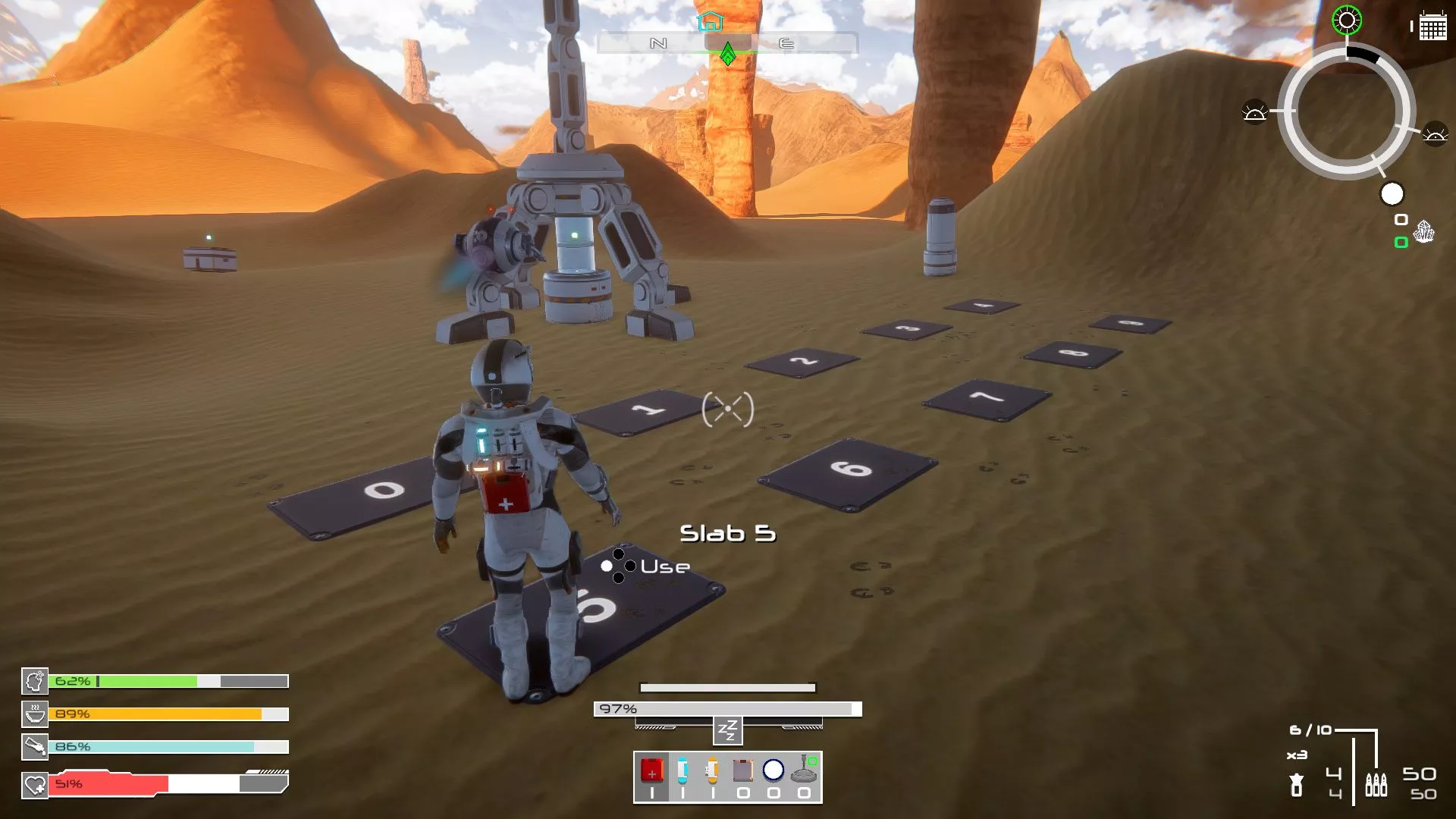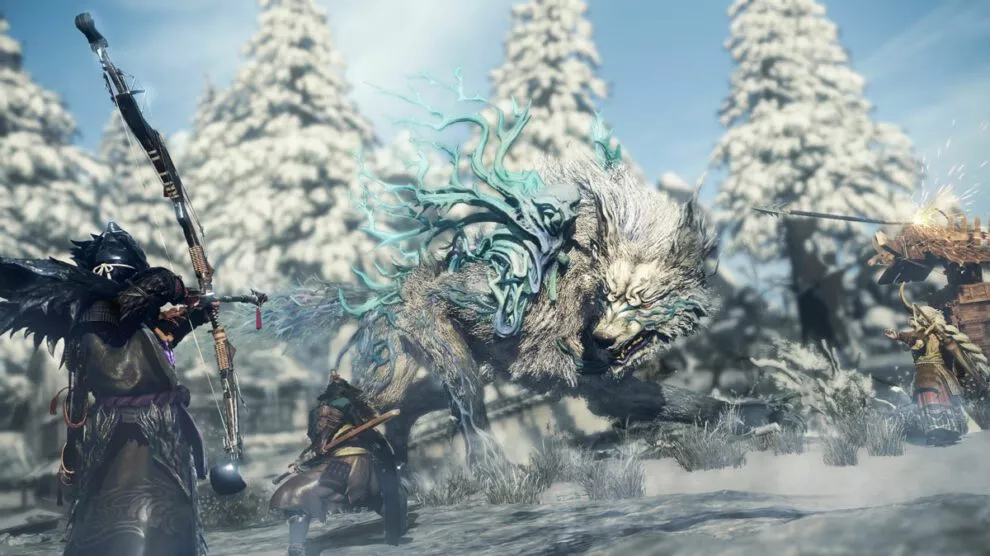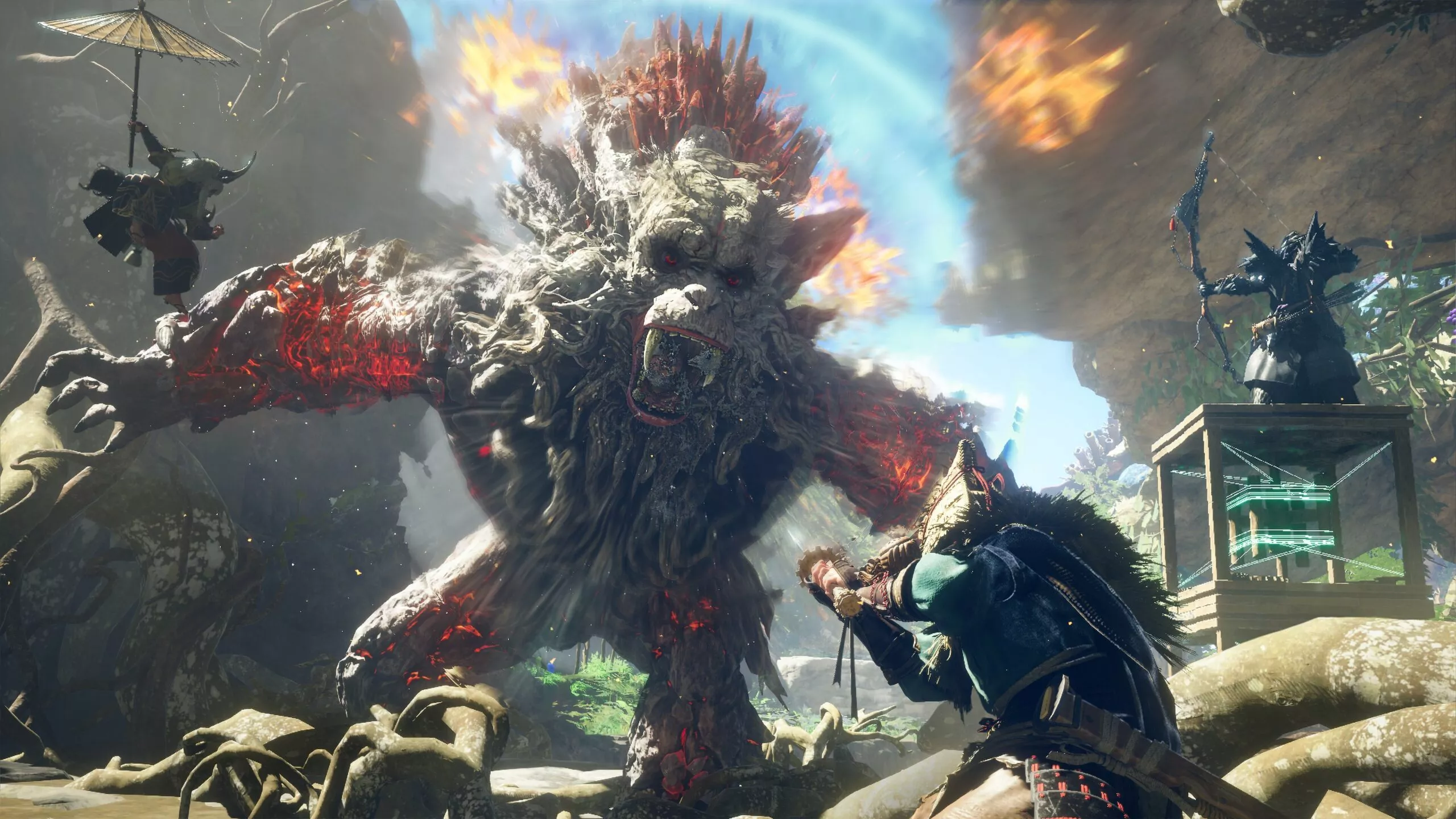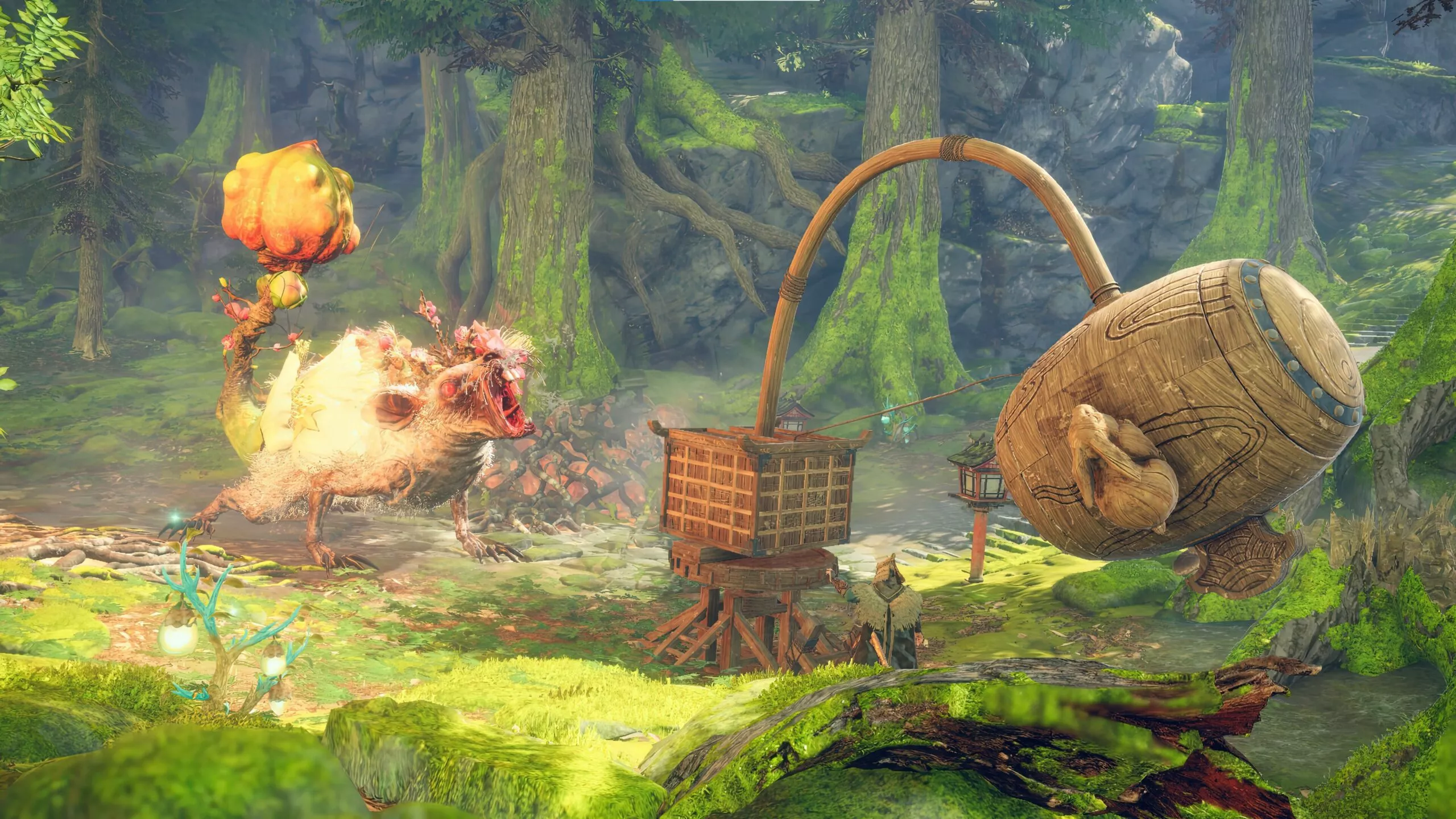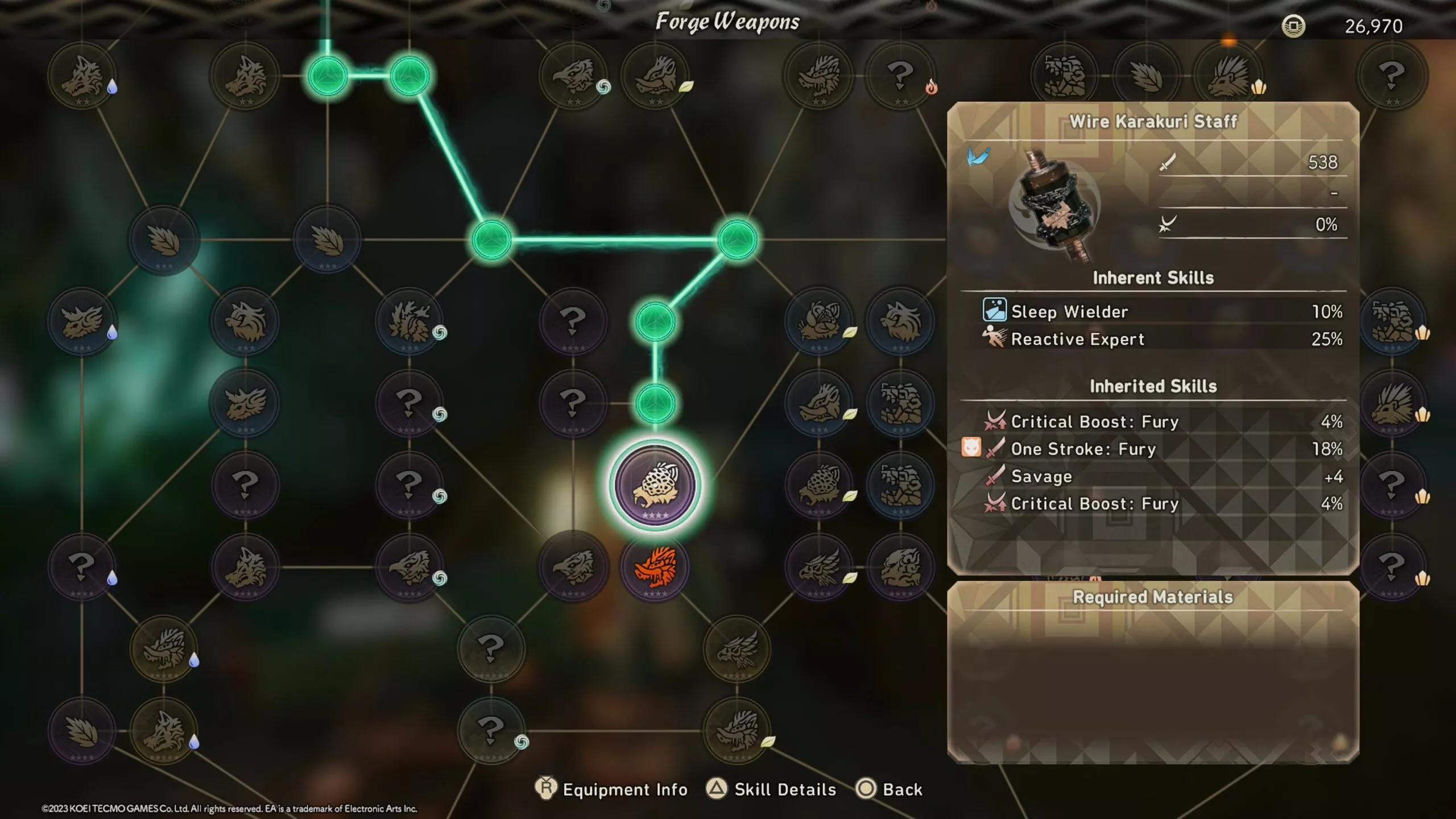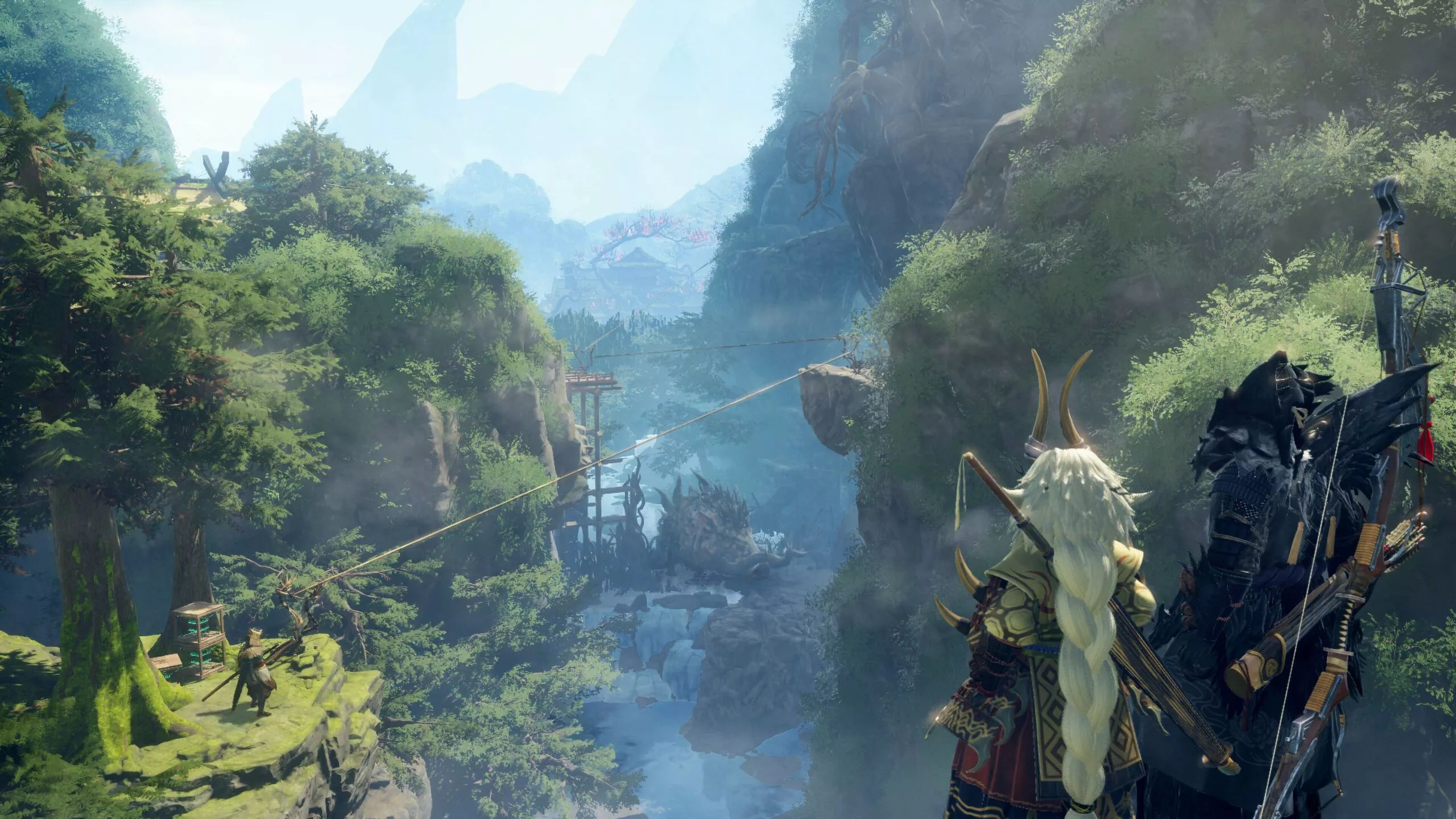Monster Hunter, but not.
Strap yourself in for a long one, because Omega Force and EA Originals’ Wild Hearts — the pair’s first foray into the niche hunting-action genre — is a whole lotta game.
Beginning with a qualifier I’m sure will become a cliché in reviews for the title, you cannot discuss Wild Hearts without touching on Capcom’s hugely popular Monster Hunter franchise. The game certainly wears its inspiration on its sleeve with comprehensive character creation, deep crafting systems, challenging beasts to hunt and a varied set of weapons and tools to use in the effort. While at first glance you might think to write it off as a simple clone, this fresh entry in the space does plenty to distinguish itself with unique mechanics and a rewarding gameplay experience.
You play as the scion of an ancient clan whose sworn duty is hunting Kemono, massive nature-infused creatures that alter their surrounding environment with elemental magic to suit their needs. For reasons that you can decide on through a series of dialogue options in the tutorial, you find yourself on the island of Azuma, a frontier wilderness inspired heavily by feudal Japan. Here, a mysterious benefactor implants a Karakuri Seed within you, allowing you to conjure lost technologies used to fight Kemono. You will slowly encounter a fully-voiced cast of side characters that aid you in your journey to restore the hub village of Minato and uncover the mysterious forces antagonising the Kemono.
The premise is a simple one, familiar to any Monster Hunter fan, but while Wild Hearts’ narrative is certainly secondary to the gameplay, Omega Force has put some effort towards building its world and engaging players in its exploration. Each of the core characters have optional story threads that flesh them out, adding meaningful context to their personalies. This serves to elevate them above their roles as simple quest givers or merchants, a small pitfall of Wild Hearts’ contemporaries. It adds stakes to major conflicts because you’re not just defending Provisions Manager and Field Team Leader, you’re helping the sake-swilling samurai Ujishige avenge his fallen clan. Sure, it’s not God of War Ragnarok, but the story here does a serviceable job at touring you through diverse biomes and a stacked roster of Kemono.
Where Wild Hearts truly shines (as any hunting-action game should) is its mechanically rich combat. While facing down any Kemono, you really feel the life-and-death intensity of the struggle. The room for error is miniscule, even in the early game; two or three strong attacks are enough to fully deplete your health. You can buff yourself by consuming edible items strewn throughout each zone, but it only goes so far. Players are required to learn the attack patterns of the Kemono in order to take advantage of openings. When opportunity arises, you need to weigh the benefits and potential consequences of healing or going on the offensive. Sound familiar? It should.
The core of Wild Hearts’ combat is incredibly similar to Monster Hunter, right down to the suite of functionally distinct weapons that serve as character classes. These can be grouped in similar categories to Monster Hunter’s famed stable of slashers and bashers. You have your comically large burst damage options, speedy DPS dealers, big-brained transformational tools and two distinct ranged options. Wild Hearts’ eight weapons — Karakuri Katana, Nodachi, Maul, Bladed Wagasa, Bow, Claw Blade, Karakuri Staff and Hand Cannon — offer unique approaches to combat that vary enough to cater for nearly every player’s preference. Even with their categorical similarities, there are no 1:1 analogues to their Capcom counterparts.
Mastery of Wild Hearts’ weapons is just as satisfying as learning the intricacies of Monster Hunter’s Charge Blade and you’ll need to if you want to stand a chance against its substantial offering of Kemono. These include poisonous crows that douse arenas in toxic goo, black belt chickens that deliver devastating fly-kicks and a horned flying squirrel that spews water and makes dolphin sounds (yep). Where Wild Hearts’ first starts to differentiate itself is in the pace and flow of its combat. Each Kemono is shockingly aggressive and the combo-heavy style of each weapon (even the big boys and the shooty ones) is littered with the DNA of Koei Tecmo’s other titles like Dynasty Warriors and Nioh.
It doesn’t end there though. In order to succeed in hunts, you’ll need to use a core mechanic. The Karakuri seed implanted in your heart allows for the instantaneous building of neo-mechanical wooden structures. These Basic Karakuri are pillars of the combat experience, and each weapon has a unique set of moves based on engagement with them. Set up a crate or three to launch into the air for a plunging attack, create a spring to dodge area-of-effect attacks or close gaps with a dazzling dash and slash (or bonk). Gliders will keep you off the ground for sustained periods of time and torches set your weapon ablaze regardless of their elemental affinity.
Powerful Fusion Karakuri can be created by stacking specific combinations of Basic Karakuri together and are unlocked through sparks of inspiration that take the form of a QTE during combat encounters. Stacking three springs on top of each other will create a spring-loaded mallet called a pounder that stuns Kemono. Six crates stacked together morph into a Bulwark that punishes charging Kemono with a long-lasting knock down. While it may look or sound unintuitive, once you get the hang of incorporating Karakuri into your combat, it becomes second nature. It is possible to take down your foes without the use of Karakuri but it is not optimal and you should expect an encounter to exceed 20 minutes.
The use of Karakuri is resource dependent and you will need Celestial Thread to do so. Different Karakuri have different costs, but the supply of thread is abundant in trees, rocks and even the Kemono themselves. When low on thread, hunters can scale the Kemono ala Dragon’s Dogma and tear celestial thread from their gaping wounds. It’s just as metal as it sounds. The addition of this unique building mechanic adds a massive amount of variance to hunts, particularly as you unlock more Basic Karakuri and more intricate Fusions. With only four basic slots and six forms of Basic Karakuri, eventually you’ll have to start picking and choosing which to take on a hunt and which Fusions will help the most in combat.
Karakuri aren’t just used for combat though. Crates, springs, gliders and the like can also be used to traverse sprawling zones. The verticality of world design rewards creative hunters who test the limits of the Karakuri’s utility for scaling walls and buildings or traversing gaps. Where things get really interesting is the third and final type of Karakuri. Dragon Karakuri are permanent fixtures in the world of Azuma. While Basic and Fusion types can be destroyed by rampaging Kemono, Dragon Karakuri are permanent fixtures in your world and they can be seen and used by other players visiting for multiplayer hunts. They are varied in their functions from traversal tools like ziplines and monocycles, to utility tools that gather resources like food and materials to reduce some of the tedium common in hunting-action titles.
Dragon Karakuri do not use Celestial Thread like their Basic and Fusion counterparts. Instead, they rely on the presence of elemental magics that spring forth from Dragon Pits. Glowing pools that can be upgraded using zone-specific materials to increase their elemental output. Each Dragon Karakuri uses a certain amount of Earth, Fire, Water, Wood or Wind energy and with high enough outputs you can build camps that serve as fast travel points. There is a massive Karakuri skill tree that allows you to craft new Karakuri of all types as well as improving their effectiveness. With minor investments you can craft forges for upgrading weapons and armour, Karakuri that will store and enhance edibles and even cages for smaller Kemono that serve as pets and reward materials.
These nifty Karakuri do a lot to reduce some of the more monotonous elements of a very familiar gameplay loop. One of hunting targets and using their parts to engage in Wild Hearts’ more traditional crafting systems for weapons and Armour. This in turn allows you to hunt more difficult targets as you progress through the game and repeat that cycle. The weapons crafting in the game borrows heavily from Monster Hunter Rise’s Rampage mechanic. Each weapon has one or two inherent skills but the real fun comes in the system of inherited skills. The crafting is presented in a massive web of branching paths. As you progress along these routes you can pick and choose inherited skills to take with you. These include simple things like attack or crit bonuses but also more weapon specific skills like a 50% increase to the Bladed Wagasa’s parry window.
Prospective min-maxers can snake weapons all over these paths to ensure they are outfitted with the best possible combination of skills for their playstyle. Armour crafting revolves around the implementation of human ingenuity or careful understanding of the Kemono. After a few hunts of a single foe, you should have enough to craft their base set of armour. Rather than upgrading these sets through the traditional means of reinforcing them with some sort of ore, you modify them along two distinct paths: Human and Kemono. Each set has pieces that can be upgraded using more materials from corresponding Kemono. While complex at first glance, upgrading is as simple and efficient as conjuring Karakuri.
Wild Hearts takes a very streamlined approach to the hunting-action genre through the implementation of Karakuri and its suite of other mechanics. Exploration functions much like expeditions in Monster Hunter; you can freely roam and hunt Kemono with no time limits. Opening the map will show icons of local Kemono and allow you to drop straight into quests that offer more rewards. These can be single or multi-Kemono hunts with various win conditions and death counts to up the already significant challenge.
The ability to set up makeshift amenities in the open zones means you spend less time travelling to and from a hub and more time hunting. This philosophy of expedience translates to the game’s cross-platform multiplayer, sure to be a major draw for fans of the genre. Players can form a party of up to three friends and tackle the entire campaign of Wild Hearts in jolly co-operation with no restrictions.
There are also numerous Spirit Gates littered across the game’s open zones that allow for drop in, drop out multiplayer with strangers requesting aid. Even in the sparsely populated pre-release period, I never struggled to find a session, and it’s a good thing too. The addition of friends to hunt with brings a whole new dimension of excitement to an already thrilling combat experience. There’s nothing more satisfying than trapping a Kemono with a harpoon and summoning a barrage of pounders to knock it senseless. I’m also not ashamed to admit that I carefully eyed the zipline networks of other players and used them as inspiration for my own. The combination of complimentary fighting styles and Karakuri options makes for a fantastic multiplayer experience.
Even with the high praise I’ve been heaping on the title, Wild Hearts is not without its issues. I played the PS5 version of the game and load times are longer than I expected on the hardware. The game offers two graphical options: a resolution mode that offers 4K graphics but locks the game to 30FPS, or a performance mode that targets 60FPS but sticks you with 1080p visuals. It’s not uncommon but for a game the eschewed a last-gen release to focus on the newer tech afforded by the PS5 and Xbox Series line of consoles, it’s a shame nonetheless. I began my playthrough on resolution mode to test capabilities and was disappointed. The 30FPS was stable but the motion blur made an early scripted fight in blizzard painful to look at. There are after image effects on the weapon that I believe are a stylistic choice but the motion blur accentuated them to the point of distraction.
Performance mode is definitely the way to play, even with occasional framerate dips. I switched over and turned off the motion blur and the visual issues were mostly solved. There are still some cases of pop in with textures and lighting effects but after some pre release patches, those are a very rare occurrence on the PS5. There are common complaints amongst reviewers about the performance on even high-end PCs. I can’t speak to them directly, but the consensus seems to be that major settings tweaks are needed to keep the game at a consistent framerate. On the gameplay side, there are some quality-of-life features missing such as wish lists for desired components and a more comprehensive encyclopedia for the Kemono that are standards in the genre.
The decision to lock three of the game’s eight weapons behind story progression is justified narratively, but it does diminish the freedom so clearly prioritised in other aspects of the experience. A less than reliable camera can also sully the immersion at times, particularly when grappled onto an enemy. It betrayed me a few times in awkward spots where I was sandwiched between an opponent and a wall, and cost me health and opportunities to attack.
In my own experience, the minor issues I came across did nothing to dull what may be my favourite gaming experience in recent memory. With its escalating tiers of difficulty, a comprehensive end-game and planned (free) monthly content updates, I can easily see myself spending over 100 hours in Azuma. Fans of hunting-action titles should enjoy the familiarity of Wild Hearts while still being surprised at the nuances that set it apart and newcomers to the niche will find its more open ended style easier to approach. I would recommend it to both. It’s certainly not the Monster Hunter killer that fan communities were speculating about. Twenty years of prestige and the well of content and goodwill that Capcom has to draw on will not be toppled in a single attempt.
Still, that Wild Hearts gets so much right on its first tentative step into the arena is bloody impressive. Omega Force has created the first title I’ve played that is a genuine contender in the space and they’ve done more than enough to justify Wild Hearts’ place in it. The result is something meaningfully different in a genre no one else has been able to touch. It’s kind of like if someone made a Souls-like on par with an actual Souls.
Wild Hearts was reviewed using a promotional code on PS5, as provided by the publisher. Click here to learn more about Stevivor’s scoring scale.
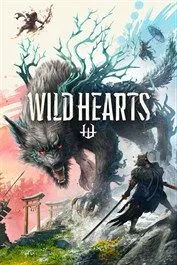 |
Wild Hearts17 February 2023PC PS5 Xbox Series S & X
|
This article may contain affiliate links, meaning we could earn a small commission if you click-through and make a purchase. Stevivor is an independent outlet and our journalism is in no way influenced by any advertiser or commercial initiative.





